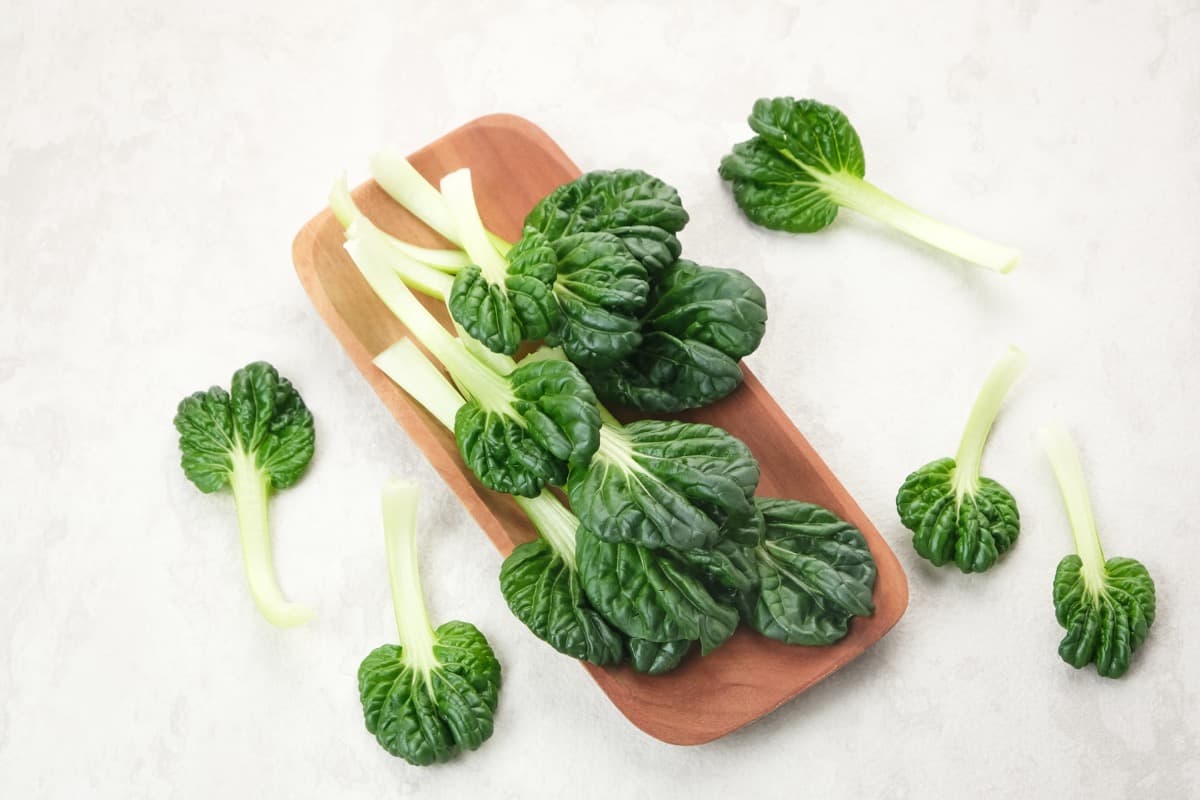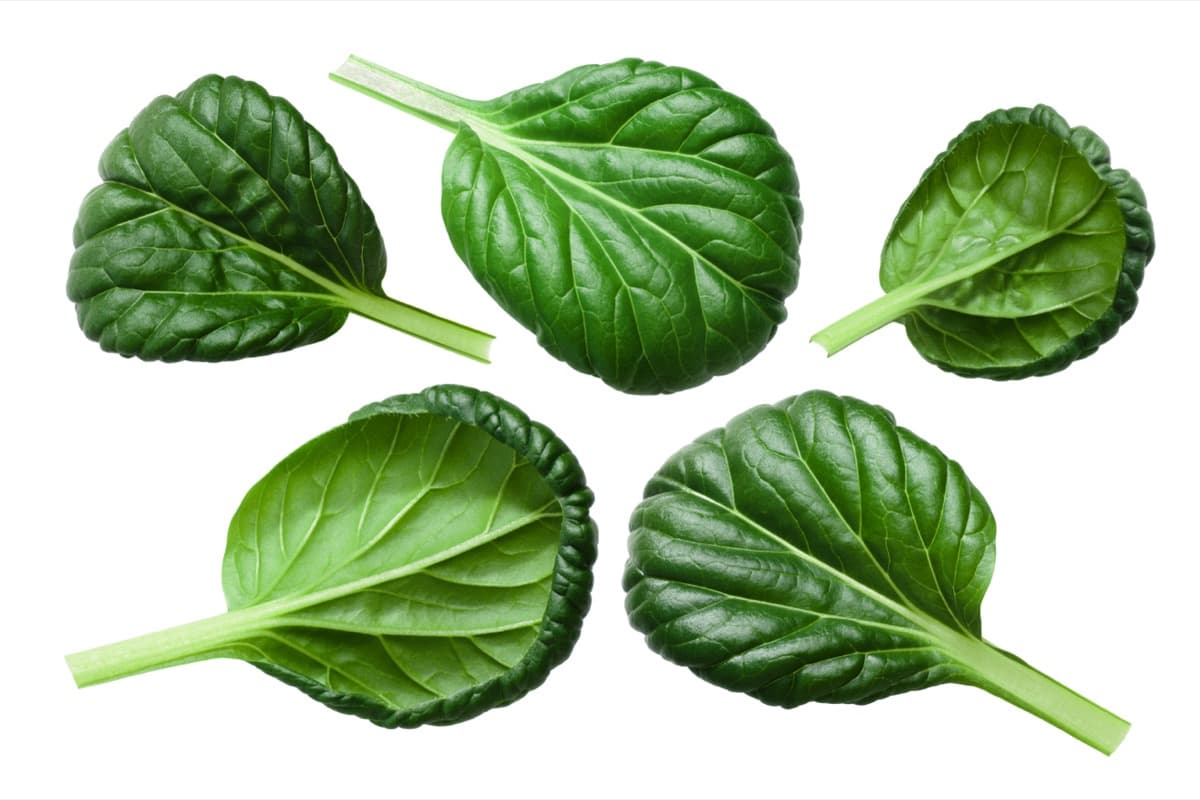Tatsoi plants, Also known as Spinach mustard, Spoon mustard, or Rosette bok choy, are leafy vegetables that are popular in many culinary dishes. While they are generally easy to grow, like any plant, they can encounter various problems affecting their health and growth. This document will discuss ten common problems with tatsoi plants and provide treatment and solutions for each.

10 Common Problems With Tatsoi Plants
How to Prevent Bolting in Tatsoi Plants
- Selecting the appropriate variety of Tatsoi is crucial in preventing bolting. Opt for slow-bolting or bolt-resistant tatsoi varieties, as they are less likely to flower prematurely.
- Tatsoi plants require a sufficient amount of sunlight for optimal growth. Ensure that your tatsoi plants receive at least 6-8 hours of direct sunlight daily.
- Tatsoi plants thrive in cool temperatures, ideally between 10°C to 21°C. Exposure to high temperatures can accelerate the bolting process. Avoid planting Tatsoi during the hottest months, provide shade, or use row covers during heat waves to prevent bolting.
- Regularly harvesting tatsoi leaves helps to prevent bolting. Harvest the plant’s outer leaves, starting from the outermost layer, while leaving the inner leaves to continue growing.
Natural Remedies for Controlling Pests on Tatsoi Plants
Soap Spray: As a homemade spray to keep bugs off plants, a simple mixture of mild liquid soap and water can be an effective pest control remedy. Mix some drops of liquid soap in water and it to a spray bottle and shake well. Spray the solution on the leaves of your Tatsoi plants, focusing on the undersides where pests often hide. The soap will suffocate the pests and prevent them from damaging your plants.
Diatomaceous Earth: Sprinkle Diatomaceous earth is a natural powder made from fossilized diatoms to stop insects from eating plant leaves. It is abrasive to insects and can effectively control pests like slugs, snails, and beetles. Sprinkle diatomaceous earth(DE) around the base of your Tatsoi plants to create a barrier that pests cannot cross.
Dealing With Yellowing Leaves in Tatsoi Plants
Nutrient Deficiency: To thrive, Tatsoi plants require a well-balanced supply of essential nutrients, such as nitrogen, phosphorus, and potassium. Yellowing of leaves is due to a deficiency of these nutrients. Consider applying a balanced fertilizer specifically formulated for leafy greens to address this issue.
Overwatering: Tatsoi plants prefer moist but well-drained soil. When the soil becomes waterlogged, the roots may suffocate, leading to poor nutrient uptake and the development of yellow leaves. Avoid overwatering. Allow the soil’s top layer to dry slightly between watering sessions, and ensure the pot or planting site has proper drainage.
Diseases: Certain diseases, such as fungal or bacterial infections, can also cause yellowing leaves in tatsoi plants. To prevent the spread of diseases, practice good plant hygiene by removing any affected leaves or plants. Avoid overhead watering, as wet foliage can promote the growth of fungal pathogens.
Common Causes of Leaf Curling in Tatsoi Plants
- Nitrogen Deficiency: A lack of nitrogen can cause stunted growth and leaf curling. Use a balanced fertilizer with nitrogen to provide the necessary nutrients to the plants.
- Iron Deficiency: Insufficient iron can lead to leaf curling and yellowing of leaves. Apply iron chelates or iron-rich fertilizers to address this deficiency.
- Aphids: These small insects can cause leaf curling by sucking sap from the leaves. Use insecticidal soap or else neem oil to control aphid infestations.
- Fungal Infections: Certain fungal infections, such as powdery mildew, can cause leaf curling. Use fungicides specifically formulated for the particular fungal infection affecting your plants.
Solutions for Preventing Fungal Diseases in Tatsoi Plants
- Proper Plant Spacing: Adequate spacing between tatsoi plants is crucial for good air circulation.
- Watering Techniques: Overhead watering should be avoided. Use a drip irrigation system or water the base of the plants to minimize water contact with the foliage.
- Mulching: Applying organic mulch around the tatsoi plants can help regulate soil moisture and temperature, preventing the development of fungal diseases.
- Proper Sanitation: Regularly remove any infected or diseased plant debris from the garden to eliminate potential sources of fungal spores.
In case you missed it: How to Grow and Care for Mugwort: Planting Instructions for Beginners

Identifying and Treating Nutrient Deficiencies in Tatsoi Plants
| Nutrient Deficiency | Symptoms | Best Fertilizer |
| Nitrogen | Yellowing leaves, stunted growth | Ammonium nitrate or urea |
| Phosphorus | Purple or reddish leaves, weak root development | Superphosphate or bone meal |
| Yellowing or browning leaf edges, weak stems | Potassium sulfate or potassium chloride | |
| Calcium | Leaf tip burn | Calcium nitrate or calcium carbonate |
Protecting Tatsoi Plants From Caterpillar Infestation
- Use Protective Barriers: To stop caterpillars from eating my plants naturally, physical barriers such as netting or row covers. Ensure the barriers are properly installed and cover the entire plant to prevent caterpillar entry.
- Organic Insecticide: Bacillus thuringiensis (Bt) is a commonly used organic Caterpillar control pesticide that specifically targets caterpillars while being safe for humans, pets, and beneficial insects.
- Biological Control: Introducing natural predators can help control caterpillar populations. Beneficial insects like ladybugs, lacewings, and parasitic wasps feed on caterpillars and their eggs.
Preventing Damping-off Disease in Tatsoi Seedlings
Use sterilized growing media: To reduce the risk of infection, use a sterilized potting mix or soilless growing media. Sterilization can be achieved by baking the media in an oven at 82°C for 30 minutes or using commercial sterilization methods.
Maintain optimal growing conditions: Tatsoi seedlings should be grown in a location with moderate temperature and humidity. Providing adequate ventilation and avoiding excessively damp conditions is important. Maintain a temperature range of 18-24°C for healthy seedling growth.
How to Deter Slugs and Snails From Damaging Tatsoi Plants
Create barriers: One effective way to deter slugs and snails is to create physical barriers around your tatsoi plants. You can do this by placing copper tape or wire around the base of the plants. Slugs and snails dislike the sensation of copper, so they will avoid crossing it.
Use organic repellents: Several can help keep slugs and snails away from your tatsoi plants. Sprinkling diatomaceous earth or crushed eggshells around the base of the plants can create a rough surface that slugs and snails find difficult to navigate. Sprinkling coffee grounds or crushed garlic cloves around your tatsoi plants can also help deter these pests.
Treating Tatsoi Plants for Downy Mildew Infection
Isolate Infected Plants: If you notice any signs of downy mildew infection, isolate the infected plants immediately. This will help prevent the spread of the disease to healthy plants. Remove any infected leaves or plants from the growing area and dispose of them properly.
Improve Air Circulation: To discourage its growth and spread, ensure proper spacing between Tatsoi plants for adequate air movement. Avoid overcrowding and consider pruning or thinning dense foliage to improve air circulation.
Organic Treatment: Several natural remedies include spraying neem oil, baking soda, and water onto the affected plants. Additionally, copper-based products can also provide some control against the disease.
Chemical Treatment: Propamocarb is a protective fungicide that provides excellent control against downy mildew. Propamocarb is typically applied as a foliar spray, ensuring thorough coverage of the affected plants.
Cymoxanil is a specific fungicide that targets downy mildew pathogens. Cymoxanil is commonly combined with other fungicides to enhance its efficacy and control a wider range of fungal diseases.
In case you missed it: How to Grow Orchids Hydroponically: Can Orchids Grow in Water?

Conclusion
By being aware of these common problems and implementing the appropriate treatments and solutions, you can ensure the health and productivity of your tatsoi plants. With proper care and attention, you will be rewarded with a bountiful harvest of these nutritious leafy greens.
- Ultimate Guide to Ossabaw Island Hog: Breeding, Raising, Diet, and Care
- Ultimate Guide to Juliana Pig: Raising Facts, Size, Diet, Care, and Lifespan
- Raising Lleyn Sheep: Disadvantages, Price, Uses, Characteristics, and Care
- Ultimate Guide to Meishan Pig: Breed Facts, Breeding, Raising, and Care
- Ultimate Guide to Teacup Pigs: Raising, Diet, Lifespan, Cost, and Care
- Guide to Raising Poll Dorset Sheep: Facts, Profile, Characteristics, Uses, and Care
- Ultimate Guide to Bighorn Sheep: Characteristics, Diet, Lifespan, Breeding, and Lifecycle
- Ultimate Guide to Raising Katahdin Sheep: Farming Facts, Breed Profile, Uses, and Care
- Ultimate Guide to Raising Oreo Cows: Belted Galloways Farming Facts, Profile, Uses, and Care